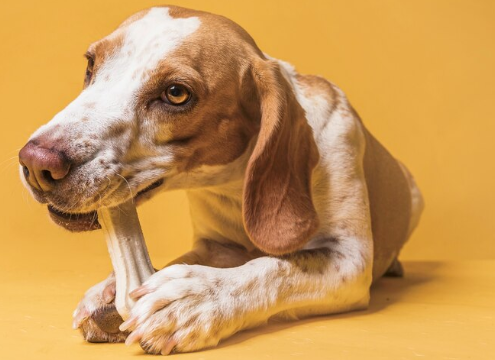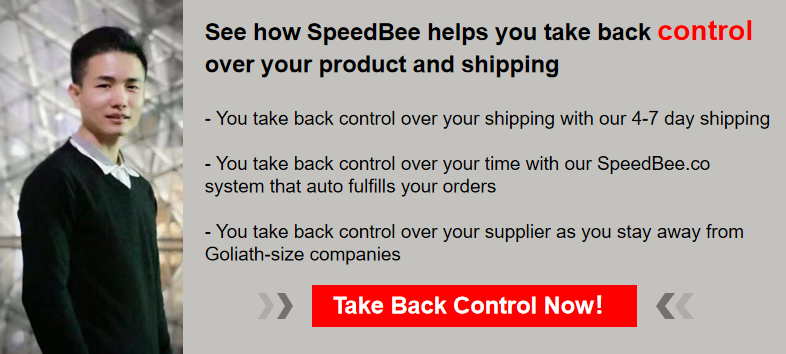Sourcing: Reddit Author: Mike
Shopify suppliers SEO Guide: $707,766.61 in Sales from These SEO Strategies
Shopify SEO Guide for Beginners - The Ultimate Guide
Note: If you’re experienced in SEO this post may not be very relevant to you.
In my last post, I talked about how I grew my (former) Shopify store, in the men’s accessories niche, to over 700K without paid ads, using SEO only and then went on to sell my store to a buyer.
This post will cover just Shopify SEO itself, why you need to do it and why it matters if you want to sell your Shopify store one day, which you should.
Let’s begin...
Shopify SEO Foundation - Keyword Research
C'mon Mike, seriously??! Hey, I warned you it's a beginner's guide ;)
Here’s why we do keyword research: We don’t want to guess how people search, we want to KNOW with actual search volume how people search for a thing, THEN we base our SEO decisions around what we found with actual search volume data.
Here are the most common keyword research tools to use:
- Google Keyword Planner - Free, gets the job done, quick and dirty
- Amazon Suggest - Free - Good for product or collection research.
- Ahrefs - Paid, expensive, but my preferred choice if you can afford it.
- SEMRush - Paid, expensive and a popular choice.
Use any of those tools to search the keywords that best describe your homepage, collections and product pages with a ‘siloed’ structure so that your pages do not compete with each other.
Example:
- Homepage keyword: Armenian underwear
- Collections keyword: Men’s Armenian underwear
- Product page keyword: Silk Men’s Armenian underwear
Research keywords for each page type above (homepage, collections and products), then export your keyword lists into something like a Google spreadsheet.
Go down the list, marking which keywords make the most sense to use for your homepage, collections and product pages.
Once you have your keyword research done, then you can move on to implementing the actual keywords you found into your Shopify SEO.
Title Tags - for ranking and selling the click
Make sure your homepage, collections and products have their title tags set up properly using the keywords you found during the keyword research phase.
When you write your title tags, there is an art to writing them.
Write your title tags with the following naming convention:
Primary Keyword | Call to Action | Your Brand Name
or just
Primary Keyword | Call to Action
For example:
Armenian Underwear | Wear Them Now | Armenian Undies
or
Armenian Underwear | Wear Them Now
Notice how the keyword “Armenian Underwear” is in the very front of the title?
That’s intentional.
Why? Because Google puts more weight on keywords that are closer to the front of your titles.
Notice how the title also has the call to action of “Wear Them Now”?
That’s intentional too.
Why? Because Google measures the CTR (click-through-rate) of your page and uses that measurement to determine if you should be ranked higher or lower, compared to your competitors.
If you get a good CTR (click through rate), your page will increase in the rankings. If you get bad CTR then your page will drop in the rankings like a sad poop emoji falling from the sky.
How do you find the CTR for your pages? Use Google Search Console to see the data.
Meta Descriptions - for selling the click
Write your meta descriptions in such a way that you include the keyword in the description once or twice along with language that encourages them to click with a call to action. Use language like “get yours now” or "free shipping" to make them want to click on your page, thus increasing your CTR and ranking your page higher.
Example meta description:
'Premium Armenian underwear that will elevate your ass. Get your silky smooth pair now with free shipping and returns (eww)...'

URLs - for ranking and UX
URLs are critically important and may be one of the most misused, misunderstood and under-appreciated elements of good Shopify SEO.
Warning: URLs require extreme consideration and thoughtfulness as you should avoid changing them after initially optimized. Take your time to get them right the first time.
You need to use the keyword research you already did in the beginning to determine which keywords to use. Implement your chosen keywords with hyphens (-) to separate the words in the URL with the following structure.
Example URLs:
/collections/mens-armenian-underwear
/products/mens-silk-armenian-underwear
Pretty basic stuff right? Exactly. The problem is, nobody does the basic stuff!
Image optimization - for Google image search SEO
Images are easy, but again nobody does it because it’s boring ass work.
Here’s what you do:
Put the optimized keyword in the image file name, separate by hyphens:
silk-armenian-underwear.png
Then also put that keyword in the ‘Alt tag’ for that image.
This way you can pick up organic traffic from Google image search. Yes, this is a pain in the ass, but if you want to do SEO right, this is what it means.
Examples Per Page Type
Now let’s combine everything we’ve covered with some examples for each page type:
Home Page SEO
Title Tag:
Armenian Underwear | Shop Now | Armenian Undies
Meta Description:
Premium Armenian underwear that will elevate your ass. Get your silky smooth pair now with free shipping and returns (eww)...
URL:
/
Collections SEO
Title Tag:
Men’s Armenian Underwear | Choose Your Material | Armenian Undies
Description:
Got an itchy ass? Our men’s Armenian underwear comes in a variety of fabrics. Choose yours now and get free shipping…
URL:
/collections/mens-armenian-underwear/

Product Pages SEO
Title Tag:
Men’s Silk Armenian Underwear | Choose Your Color | Armenian Undies
Description:
Get silky smooth with our premium silk Armenian underwear. Choose your favorite color. Free shipping on every order…
URL:
/products/mens-silk-armenian-underwear/
Keyword Optimized Content
Now that you have all of that in place, we can move onto content.
You just want to write good quality content that describes what the user is going to experience on that page and any vital information, things they should know...etc. Include your keyword(s) multiple times and weave them in and out of the content naturally.
Rule of thumb: Aim to include your keyword at least 1-2x per paragraph, but don’t get OCD about this because Google understands natural language and synonyms. Just try to include it where it is natural.
Home Page Content
For the homepage, I suggest you have at least 1000 words. Explain what the store sells, the benefits and any additional perks such as free shipping.
Here are some things you can include on your homepage:
1. Lifestyle content
- What problem does it solve for the customer?
- Style and self-expression
2. FAQ section (put towards the bottom)
- Questions about the products, shipping and store policies
3. Q&A section (put towards the bottom)
- Target ‘question keywords’ so that you have a chance at showing up in the featured snippets of Google. Think broad questions like “Where does Armenian underwear come from?”. Your keyword research will reveal these question keywords.

Collections Content
On your collection pages, you want to have a minimum of 500 words. This is harder to do on the collection pages because you don’t want a big wall of text to push the products down, right?
Instead, show a preview of about 50 words of content with a "read more" link that reveals the rest of the text when clicked. Look into custom CSS for this. This way, your content is at the top of the page (which is better for Google) but doesn’t push the products down the page, since it is collapsed under the ‘read more’ link.
Secret tip!
Google LOVES to rank collection pages for buyer-intent keywords.
Meaning: if a user searches a keyword that has buyer intent like ‘best Armenian underwear’, or ‘2024 armenian underwear’ Google is more likely to rank COLLECTION PAGES over homepages or product pages, because it understands that that keyword means the user is wanting to shop and compare, so showing collection pages are the proper result to show for that. This is important to know, so that you can map your keywords to the proper page type.
Confused about what kind of page a keyword belongs on? Google that keyword and looks at which kinds of pages Google already ranks. That will tell you what to do.
Don’t sleep on your collection pages' SEO.
Product Pages Content
For product pages, you want to have as much content as you can.
Describe your products thoroughly with a minimum of 200 words, preferably 1000 if you can.
This is a great spot to incorporate UGC (user generated content) through customer review strategies. Setup an email series to email the customer after purchase to leave a picture review of them with your products in exchange for a discount on their next purchase. This will create a ‘flywheel’ of customers creating content for you.
Check my profile for recommended apps for this.
Blogging?
Blogging makes my head hurt.
People hear the word ‘blogging’ and think that means they need to write endless blog posts about absolutely nothing that just fills their store with garbage content that ends up getting no readers or links and dilutes the SEO power of their store. Meaning, you create a bunch of DEAD WEIGHT by blogging without a real strategy.
I’ll just say this: DO NOT BLOG FOR BLOGGING’S SAKE.
That being said, if you see keywords in your keyword research phase would pull in your target customer, then you should plan on how to create an authoritative piece of content around that topic to pull them in.
Examples:
'Underwear shopping guide'
'Underwear styles, from the 1950s to today'
The idea here is less is more. If you create content, it should always be AUTHORITATIVE and with tons of value, so that you can always shop it around for LINKS!

Other Pages - for legitimacy
You should have these other pages so that you look legit and aren’t some fly-by-night operation in your Mom’s basement:
- Privacy Policy
- Terms & Conditions
- Refund & Returns Policy
- About Us
- Contact
You can find language for these pages all over the Internet or use ChatGPT.
Force Crawl Your Changes - for speed
Any time you make changes to your site, do a forced-crawl in Search Console to get those changes indexed FAST.
Put the URL you want crawled in Search Console in the “URL Inspection” field and hit “Request Indexing”. This means it will crawl your page ASAP as opposed to whenever it gets around to it, which could be days or weeks.
Site Speed - for better rankings
Site speed is another big factor in ranking well in Google. If your Shopify store is loading slowly (or slower than your competitors) Google will rank you lower.
The basics are pretty simple:
- Avoid using big, uncompressed pictures or files anywhere on your site (use an image optimizer plugin or manually resize your images before uploading them
- Avoid images sizes bigger than 100KB if you can help it
- Avoid using custom code
- Use pagespeed.web.dev to test your scores
Building Backlinks - for beating the competition
Now, just because you did some Shopify SEO basics like the title tag, description, URL naming and wrote some content doesn't mean your job is done Snuffleupagus.
What really powers your store to the top, especially if you’re in a competitive niche is BACKLINKS. We’ve all heard of them right? Yet, they seem so elusive and peculiar, like that mystery pizza sauce stain on your shirt.
Building backlinks is not easy, however, there are strategies that work well for Shopify store owners, since we have physical products to leverage...
How many backlinks do you need?
Homepage: As many as humanly possible to your homepage
Collections: Collection page links are near impossible to get, so don’t worry about them too much. A simple way to get links to your collection pages is to link to them in your store’s content internally.
Product Pages (best sellers): Maybe a handful of links (depending how competitive).

Product Review Campaigns
One effective campaign to use to get backlinks to your store is by implementing a product review campaign. There are a few ways to do this:
Approach Small Bloggers
The idea is simple: You outreach to bloggers to review your products. They will review your product and post their review on their website, usually including a link to your brand and the product itself if you do this right.
Use your best selling products for this campaign.
Here are the basic steps and what to look for:
- Create a list of small blogs in your niche with a DA (domain authority) of DA5-DA20 in a Google spreadsheet. Think one-man/one-woman-army type of blogs where the blogger themselves answer emails.
- Get their emails and send them an email pitch to review your product on their website.
Here’s a simple template you can customize:
Subject: Fan of Your Content
Hi [Blogger's Name],
I love the content you write about. I especially loved [some personalized thing from their blog or something they said].
I was wondering if you would be open to reviewing my best selling product on your blog? I think it would fit in perfectly with your content and audience and of course you would get to keep what I send to you as a gift.
Please let me know and I can share more details and get it out to you ASAP.
Either way, keep up the great work!
Sincerely,
[Your First Name]
- Ship them your product
- Wait for the review to go live with your backlinks if you did everything right
Rinse and repeat this process until you get multiple bloggers reviewing your product and linking to your product pages.
To find these bloggers, you can search Google using search operators like "fashion blog" "powered by WordPress." or use of the more premium software tools to save lots of time - check my profile for recommendations.
Don’t want to do any of that?
Go to Upwork and throw up a job for a “link prospector”. That person will create a list of blogs for you to outreach to. You can also throw up a job for an “outreach manager” once you have your process down of getting links consistently from bloggers.
Just make sure you either do them yourself or get someone experienced. Don’t let an inexperienced person burn through all of your prospects and waste the list!

Content Marketing for Links
Another option for building links to your Shopify store is content marketing. This revolves around finding a topic that is relevant to your store and producing a piece of content that you can shop around to bloggers to link to.
Some content types that do well:
- Proprietary Data Studies: Can you turn the data you have on your customers into some kind of visual data-driven study that bloggers would love to link to?
- Example: ‘Men Prefer Silk Underwear Over Cotton According to this Silky Smooth Study (with underwear infographic)’
- Ultimate Guides: These are massive posts on your store’s blog that act as a ‘how to’ guide and are positioned as authoritative and a serious resource.
- Example: ‘The Ultimate Guide to Men’s Underwear in 2024’
After you create these content pieces, you would once again perform outreach to shop your content around. You need to be flexible with the possibilities of things that can happen, so don’t be a mechanical robot about this. Just get people interested when you’re outreaching and offer them a lot of value to get these results.
Reverse Engineering Your Competition
Since link building is a real biznatch, sometimes you just want to see what the competition did and copy them.
In that case, go to Ahrefs and search your competitors.
You’ll see their backlinks and which sites are linking to them. It will give you ideas for how you may be able to secure the same exact links or give you ideas for an outreach campaign to mimic what they did.
This is especially useful when doing product review campaigns as if you see that a competitor is getting their products reviewed by bloggers, it already tells you exactly who to contact for your own reviews.
Leverage Your Products for Links
I don't have all the answers on how you can get links. There are literally infinite ways to build links. Just remember this, YOU HAVE PHYSICAL PRODUCTS TO LEVERAGE. Get creative and think outside the box. There are probably a bunch of ways to get links by leveraging your products that nobody has discovered or thought of yet. Just think "I have these products, how can someone give me a link for it?". Let your imagination go wild on this...

Shopify SEO is Not as Hard as You Think
While all of this is mind-numbing and boring to think about it, it is ESSENTIAL if you want to rank, get organic traffic and most importantly, BUILD A STORE THAT HAS INTRINSIC VALUE, so that one day you can SELL YOUR STORE TO A BUYER.
Let me know any questions you have in the comments or anything I missed and I’ll do my best to answer them!
I always keep an eye on new comments, so if this post is old when you find it then comment anyway and I'll get back to you at some point.
Comments:
C1
Thanks for sharing! Will read it again in detail and meticulously once I start…
C2
I was google-ing trying to find this exact information 8 hours ago, and couldn't find anything that was recent and detailed enough for me to like. And then I see this by "accident". Thanks Mike!
OP
I had a dream that you needed SEO help ;)
C3
Thanks for the detailed guide, Mike. It’s super useful especially for newbies in SEO. I’ve been struggling with finding the right keywords for my Shopify store, so this breakdown is a huge help. On a side note, I’ve been experimenting with automated responses on Reddit through a tool called PluggerBot, which has been pretty interesting. It’s crazy how tech can handle some of the promotional grunt work for you. Anyway, appreciate the tips, gonna start applying them right away.
OP
Glad you enjoyed it.
C4
Thank you for such a detailed post. I am yet to start my dropshipping company and this would be extremely helpful

C5
I did all of these except on building back links (which I'm currently working) and had a massive jump on my sales since then. Before SEO my store only averages 40k-50k sales/month (with paid ads) and now it's around 140k sales/month (still on paid ads lol). To me, paid ads still necessary for small time brand or store. Though I will try test on the following months how my store would perform with SEO alone.
How much do you spend in ads?
Spending around 2-3% of my sales revenue which will be divided on different platforms.
OP
Awesome!
Did SEO boost you from 50k to 140k?
I am running paid ads, but SEO certainly helped me reach that number.
C6
This has some really great and well-reasoned tips. Thank you!
C7
Amazing work, thanks! How long did it take to achieve your current sales level with these strategies? I understand it takes time, but an estimate would really helps to let me stick to it.
OP
Started getting traction around the 6 month mark. Sold the store around the 3 year mark. 6 - 12 months for SEO may sound long (and yes, it is) but I see people on here saying they're still not getting results with FB ads after 6 months and they don't have anything to show for that time...whereas with SEO I was building internal SEO equity (link equity), so I was able to go on and sell the store eventually because all of its traffic was from organic search and FREE.
Big difference compared to ads. Nobody wants to buy a store that can be turned off from a button inside an Ad account. I'm not against ads at all and of course they can be profitable, but that is not building a business. It's simply arbitrage.
What should motivate you to spend the time doing this is not "eventually I can get free traffic", instead it should be "if I build my store this way I can eventually sell it to a buyer."
Look at all of the online businesses being sold on Empire Flippers. Almost all of them have a significant portion of their traffic from Organic search (Google) and a diversified traffic pie overall.
I haven't seen any that are only built on ads.

C8
You are AWESOME!!!! Thank you so much for this rich post. I'm starting up my store soon and this is the exact content I have been looking for.
OP
Awesome! I would probably avoid the Armenian underwear niche though.
C9
fgdssdfg543543453
OP
3000+ words of boring SEO sexiness
C10
As a shopify newbie, thanks a lot. Easy to understand and well structured, hope I reach your achievements one day. Wish you all the best!
C11
I read both of your posts like this (the other was mostly on selling the biz) a couple times and it’s making a lot of sense combined with other resources. I love that you have called out people before on the “Winning Product” mindset and pushed more of a “serious online retailer” mentality. Cater to the niche and audience sounds the best way to go. Your advice will serve me well and I look forward to reading more of your posts and comments to fill in gaps. You seem thorough, experienced, and willing to share, which are all things I’m grateful for.
I recently quit my job due to health reasons (losing my mind working for 5 years on a death march towards a dangled reward they’ll never give) and I’m giving online retailer entrepreneurship a shot soon. I’ve been a small business owner at a mall boutique that opened 10 years ago that had a successful 6 years until Covid and we closed. I’ve been in IT since as a software engineer, have created websites, and even done some freelance. I do video production and photography as hobbies.
I feel like my skills are in a good place and I’m connected to the community where I want to sell products. My network is stronger than I thought as I have been offered a lot of support from within that community.
What are some good ways of accepting help? Where do you draw the line? I don’t want to ask people to work for free but also I can’t pay others. Some examples of the type of help offered: costume design, creative writing, SEO/marketing, product selection.
Edit: Also at this point I’m assuming you’re a fellow Armenian haha
OP
Sounds like you already got a strong foundation to get started!
I see lots of people here with absolutely no skills and never made a $1 online before trying to go into one of the hardest business models of e-commerce/dropshipping. I had 7 years of experience making money online before even touching dropshipping. Everything from copywriting to affiliate to door-to-door sales to designing landing pages for clients. So I think that's why dropshipping 'worked' for me, because the skills were already there.
If you already have some good skills, already ran your mall shop then I say just get started. What else are you waiting for?
I'm not following your question about accepting help. Can you elaborate?
I'm American actually (Italian descent). I don't know why I ran with the Armenian thing. It just came to me and it sounded funnier than 'French buttplugs', which would be too obvious. Though, I do enjoy making fun of the French, so maybe that will be in my next post :D
Thanks for reading!
I appreciate the quick response and reflection as to why core skills matter in this.
What am I waiting for? Me to mentally wake up, discard doubts, and just do it probably.
As to the help question, it was more around setting boundaries on how much help I should accept and how much I should go at it myself. And does relying on others eventually divide up your business because you have to pay others. I want to protect myself and business for myself as much as I can while not asking too much free labor/advice out of others. It could be a delicate balance..
OP
Start yourself and hire when needed. You'll know when that time is because you'll feel it. It doesn't divide your business up, it frees up your time away from tasks that are better allocated to people who can't do what you do. It's your job to steer the ship, not to insert hashtags.

C12
This is probably the most comprehensive and genuine tutorial on how to become successful in drop shipping. Thank you. Did you open an LLC before you launched your store or after?
OP
After, and even then it’s unlikely you’ll need it unless you’re shipping glass or something that can be a liability.
C13
Whoa! I’m going to need to print this one out! Thanks for this!! I’ve been trying to figure seo out now that I’ve gotten comfortable with my ads. Can this be used for non-dropphipers also?
OP
Yes, of course. SEO is SEO. Only thing that changes for the most part is link building strategies (highly dependent on the niche). On-site SEO is always the same no matter what.
C14
You’re a beast bro! Thank you very much. I needed this information so badly 😄
Bless you!
OP
No problem, thanks for reading.
C15
I'm building a DS store rn doing exactly that "Focusing only on SEO." I was inspired by your last post. I'm learning SEO and implementing it on my store at the same time. Hope it goes well for me. Any advice?
OP
Nice. If you do it well enough and start entrenching yourself in the rankings for your main keyword(s) you'll have a very sellable store when you're ready to exit.

C16
Awesome post, Mike. Can’t believe I’ve had my store 3 years and done zero SEO. Time to get to work. Thanks again for the info bomb 💣
OP
Np and thanks for the reward! I have the opposite problem. Done almost no ads, so diving into the paid ad world (FB mostly) now to round out my chops.
My condolences... Meta ads has been a shitshow since mid February. It feels a bit like spinning a roulette wheel each day. You'll go from 6x ROAS to zero and then end up barely breaking even over the 30 day period. VERY frustrating...
I was doing well with Google search ads, but I think that's because people saw the brand on Facebook ads and searched for it. When I don't run both together - the performance drops noticably.
OP
Yeah, I've heard lots of the drama, just haven't experienced it since I'm not an ads guy...but about to run them shortly for a new store. I have an interest-based campaign and retargeting campaign setup. Any tips?
C17
Applied some of the concepts beginning this year, and we started to move up in rankings quite heavily.
OP
Nice! What did you do specifically?
Mainly, metadata, titles, urls, and collection structure.
But its not a dropshipping shop.
C18
Thanks, but can it really work?
OP
I built my store from scratch and sold it with what I wrote above...so...yes. SEO is nothing new.

C19
Okay second read on you. Whats up with you and butts. I will keep reading now…
OP
Butts make the people laugh.
How significant is the url for the product page? Could I just leave it as the name of my product or do I also need to do that. I only ask bc I have some custom code I would need to change if I did change it.
C20
How many traffic / session you get on average (day to day basis)..
OP
I sold the store, so I don't remember. My lowest month was $0 (at the beginning) and my highest months were around $50K in sales. My AOV was around $120 or so. So maybe you can do the math with that. My guess is somewhere in the 200-500/sessions/day.
C21
Someone
What’s a capital you recommend to start with when you start from scratch? And which do you recommend going for 1 product vs general store?
OP
Neither. Build a brand. I didn't do a 1-product or general store. Connect a specific kind of traffic to a brand built specifically for them. If you put ANY products in the store and the branding is specifically for them, then you will make sales. I made sales without ever having a 'winning product'. I had a winning store.

C22
Hi Mike how long did it take before you seeing traction?
OP
SEO is a slow burn. 6 months is average, but if you push hard at the beginning you can start to see results slowly trickle in in 2-3 months. That requires already having SEO skills though.
C23
Holy crapsicle! This would've taken a fair while to type out! Good job OP! 👍
OP
Yep, about 3 days to get it all making sense. Thanks for reading Paul.
C24
Yet another AI post with shill accounts thanking it
OP
I actually typed this out by hand over 3 days, but yeah, feel free to mope around looking for things to complain about. I used to be a copywriter writing hundreds of articles in 2010, so yes, my spelling and grammar are actually good, which I guess means 'AI' in your head.
C25
Great post, Mike! Thanks for breaking down Shopify SEO in such an approachable way—definitely bookmarking this for future reference. For those looking to boost their content quality and SEO, edyt ai can be a handy tool.
Here are some related articles that may interest you:
1. How I Did 700K in Total Sales WITHOUT ADS (upvotes: 557)
2. Found my first 10k+ winner! (upvotes: 221)
3. Here's how to find a "breakout" product (upvotes: 191)
4. Effective Facebook Ads Strategy by Shopify Suppliers for Dropshipping Success (upvotes: 224)
Shopify SEO Guide: $707,766.61 in Sales from These SEO Strategies
byu/tensegrity33 indropship



